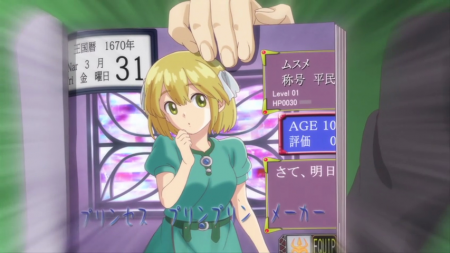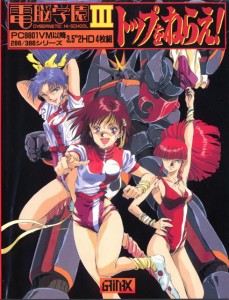Ask John: Which Anime Studios Have Produced Video Games?

Question:
I understand that anime studio Gainax released its owning gaming series “Princess Maker” which, while popular internationally, has never seen an official English release. What I’m curious to know is, are there any other examples of anime studios creating their own games like this?
Although the most recent Princess Maker video game was released six years ago, the franchise may be back in the forefront of otaku awareness thanks to a reference in the recently broadcast fifth episode of Outbreak Company. The Princess Maker game franchise is one of the unique creations that set anime studio Gainax apart from most other anime production studios. Gainax was founded by a group of artistic college friends who pooled their talent and resources into a wide variety of otaku-oriented projects, including filming a series of live-action short films such as Kaettekita Ultraman (1983) and Yamata no Orochi no Gyakushu (1985), garage kits produced and distributed via the studio’s retail company General Products, original manga anthologies such as Mega Comics, and computer games. Gainax’s first in-house developed video game was the first of three Dennou Gakuen adults-only strip-trivia game for the PC-9801 and MSX computer systems. The first game was released in September 1989 and was followed by two more games in 1989 and 1990. The third entry, Dennou Gakuen ~ Cybernetic Hi-School III: Top wo Narae! was actually an adults-only quiz game featuring the girls of Gunbuster. Gainax also developed the adults-only 1990 strip-card battle computer game Battle Skin Panic before releasing its all-audiences Princess Maker adventure game on May 24, 1991. Gainax has continued to periodically develop computer games including the 1992 Fushigi no Umi no Nadia game, 1994’s TurboGrafix-CD puzzle game Gotzendiener, and 2001 Shin Seiki Evangelion: Ayanami Ikusei Keikaku and 2004 Shin Seiki Evangerion: Ikari Shinji Ikusei Keikaku simulation games.
While countless anime production studios, including Madhouse, Xebec, Kyoto Animation, AIC, ufotable, and 4°C, to name a few, have contributed animation to video games developed by other companies, few anime studios have independently developed their own video games. On September 12, 2005, Gonzo Digimation Holdings announced its acquisition of the video game development company Kabushiki-gaisha Warp Gate Online. GDH changed the name of Warp Gate Online to Kabushiki-gaisha Gonzo Rosso Online in December 2005. While the company was owned by GDH, Gonzo Rosso co-developed the Master of Epic online RPG with Hudson Soft.
In part because video game history is not my strongest suit, I can’t recollect any other anime production houses that have independently developed their own video games, but I would like to mention a few more instance in which established studios contributed more than just opening animation sequences or short cutscenes to particular video games. AIC was commissioned to produce the first-person perspective anime footage for the 1988 Captain Power: Battle Training Video three-volume interactive VHS video game series.
Toei provided the extensive original animation footage for early laserdisc interactive anime arcade games including Thunderstorm (1984, Data East), Ninja Hayate (1984, Taito), Badlands (1984, Konami), Time Gal (1985, Taito), Road Blaster (1985, Data East), and Uchuu Senkan Yamato (1985, Taito). TMS provided the animation for Hudson’s 1995 PC-FX interactive anime fighting game Tengai Makyou: Karakuri Kakutoden. Kyoto Animation provided the original anime for Konami’s 1998 interactive anime Dancing Blade: Katteni Momotenshi! and its 1999 sequel Dancing Blade: Katteni Momotenshi II ~Tears of Eden~. Production I.G provided the original animation for Sugar & Rocket’s series of “Yarudora” (interactive drama) interactive anime Playstation games released from 1998-2000.


